Demystifying the World of Shotguns
Tags:
THE OFFICIAL PUBLICATION OF HOUSTON SAFARI CLUB FOUNDATION • SUMMER 2025
BY HEIDI LYN RAO
Shotgunning can be the most confusing of all the shooting activities. For the shotgun games, such as trap, skeet, or sporting clays, you are swinging and tracking one or more bright orange clay birds that are launched from a known or unknown thrower, zipping across the sky at a variety of angles, speeds, and directions. For hunting, you are scanning the horizon to quickly and properly identify doves, ducks, geese, or pheasants, then swinging your shotgun to quickly and ethically add to your bag. Choosing
the right shotgun is more than personal preference. Different types of shooting sports and hunting call for different types of shotguns.
Shotgun features should be taken into consideration. The weight of the gun, shotshell capacity, and action types are all factors to be considered. Choosing the wrong shotgun for your activity can affect the enjoyment of the sport and even contribute to the outcome of your event or hunting pursuit. Weight is an important factor in selecting a shotgun. A shotgun that is too heavy can be difficult to carry over long distances. Another issue to consider regarding the weight of the shotgun is recoil. The heavier the firearm, the less felt recoil.
Shotshell capacity is another consideration when choosing a shotgun. Over-and-under and side-by-side shotguns only hold two shells. Pump and semiautomatic shotguns can hold four, five, six, or even more shells. Always research the laws of the state you plan to hunt or shoot in ahead of time to ensure you stay within their laws. Many types of game birds can only be hunted with a shotgun capable of holding no more than three shells. Each type of shotgun action functions differently, so the shooter should get the type of action that he or she can operate easily, comfortably, and safely. The most common types of shotgun actions are pump actions, semi-automatic actions, and hinge actions, which include over-and-under and side-by-side shotguns.
PUMP SHOTGUNS
Pump shotguns are “pump” or “slide” action firearms. Pump shotguns are operated by pumping or sliding the shells from the tubular magazine into the chamber of the firearm. “Pumps” are loaded through the loading gate, so the shells fill the tubular magazine. Next, the fore-end is pumped, which feeds a shell into the chamber. The shotgun is now ready to fire.
Pump shotguns are probably the most common firearm used for bird hunting. Hunters use pump-action shotguns to take upland game birds such as pheasant, quail, and dove, as well as waterfowl such as ducks and geese. Pump shotguns can take much “dirtier” conditions than a semi-automatic shotgun and can hold more shells than either an over and under or a side-by-side shotgun.
It is important to remember that if you are hunting migratory game birds, you must have a plug in the tubular magazine in the shotgun you are using to restrict the number of shells that can be loaded into the magazine. You should only be able to load two, 2 3⁄4” shells into the tubular magazine. This limits the shotgun capacity to a total of three (3) shells when one is loaded in the chamber.
SEMI-AUTOMATIC SHOTGUNS
Semi-automatic shotguns are either gas or inertia-operated fire- arms. Semi-automatic firearms are loaded through the loading gate to fill the tubular magazine and then charged by pulling the charging handle to its furthermost travel to the rear and released. Once the charging handle slams shut, the shotgun is now ready to fire. It is once again important to remember that if you are hunting mi-
gratory birds, you must have a plug in the tubular magazine in the shotgun you are using to restrict the number of shells that can be loaded into the magazine. You should only be able to load two, 2 3⁄4” shells into the tubular magazine, limiting the shotgun capacity to three (3) shells when one is loaded in the chamber.
Semi-automatic shotguns are usually used almost exclusively by waterfowl hunters. This is because these firearms do not like dry, dusty conditions. Excessive dirt, dust, and grime can cause the semiautomatic shotgun to malfunction. Wet and marshy conditions are not usually dusty. Another reason why semi-automatic shotguns are used for waterfowl hunting is the weight of the firearm; they tend to be on the heavy side. When pursuing waterfowl, you are usually hidden in a blind, so weight is not much of an issue. Other game birds hunted in fields or open areas require the hunter to carry the firearm for long distances.
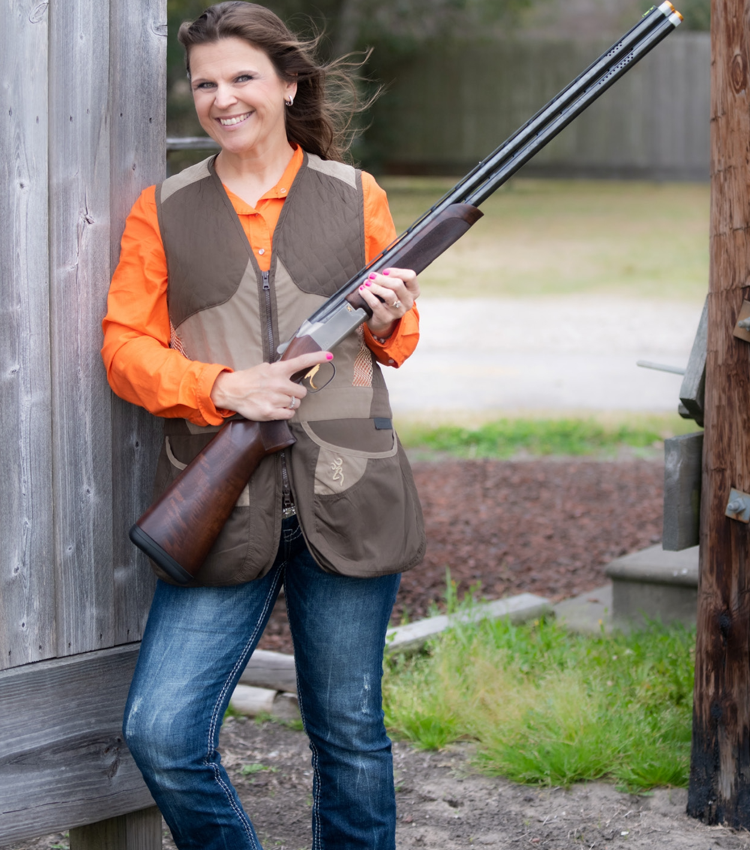
OVER-AND-UNDER SHOTGUNS
Over-and-under shotguns are “hinge” or “break” action firearms and have two barrels that are stacked vertically, one barrel on top of the other. Hinge-action firearms are loaded by pushing the lever on top of the grip to one side and unlocking the hinge. The firearm then “breaks” forward, exposing the two barrels’ chambers. The shells are then inserted into the chambers, then the hinge of the firearm is closed, and the gun is ready to fire. Over-and-under shotguns are not only popular with bird hunters but also with trap, skeet, and sporting clay shooters as well, because the design of these firearms allows for fast swinging on target and on game.
SIDE-BY-SIDE SHOTGUNS
Side-by-side shotguns are “hinge” or “break” action firearms and have two barrels that are set horizontally next to each other. Hinge-action firearms are loaded by pushing the lever on top of the grip to one side and unlocking the hinge. The firearm then “breaks” forward, exposing the two barrels’ chambers. The shells are then inserted into the chambers, and the hinge of the firearm is closed, and the gun is ready to fire. Side-by-side shotguns are generally heavy compared to the lightweight over-and-under models available to the consumer.
Side-by-side shotguns were once the dominant shotgun for hunting, livestock protection, and self-protection. Today, side-by-sides are used almost exclusively for upland game birds. Some of these include quail, chukar, pheasant, grouse, woodcock, and snipe. This type of game is flushed from hidden ground cover or in hardwood forest ecosystems. It is uncommon to see side-by-sides when hunting waterfowl or species such as rails and gallinules, which are found in coastal areas.
Once you determine which shotgun is best for the activity you are doing, the next step is to become familiar with the language and vocabulary surrounding it. Firearms in general have their own terminology that non-shooters may not understand. Shotgun shooting, especially, has its own unique terminology that shooters should become accustomed to. Unless you are active in the shotgun world, there may be words or specific terms that you may not understand.
GAUGE
Shotgun barrels are classified by gauge instead of caliber. Gauge is an old English term referring to the number of lead balls of that bore diameter that add up to weigh one pound. This comes from the days when lead was purchased by the pound to make ammunition. A 12-gauge shotgun means that you can make 12 lead balls, each of that bore diameter size, out of one pound of lead. Each of the 12 lead balls weighs 1/12-pound of lead.
The smaller the gauge number, the larger the bore size. From the smallest size shell diameter to the largest, the common gauges include the 28-gauge, 20-gauge, 16-gauge, 12-gauge, and 10-gauge. The most popular sizes of shotgun gauges are the 12- and 20-gauge.
The lone exception to this measuring system is the .410 bore, which is the smallest. Although sometimes inaccurately called a .410-gauge, it is measured in caliber because it is designated by its bore diameter. It has an actual bore diameter of 410/1000ths of an inch, which is approximately equivalent to a 67½ gauge.
SHELL LENGTH DESIGNATION
This refers to the gun’s chamber length, not the length of the shot shell. You can shoot shells that are shorter or equal to the gun chamber length, but not longer. Modern 12-gauge shells come in 2¾-, 3-, and 3½-inch lengths, and they can hold different amounts of powder and shot charges.
Below: Break action.
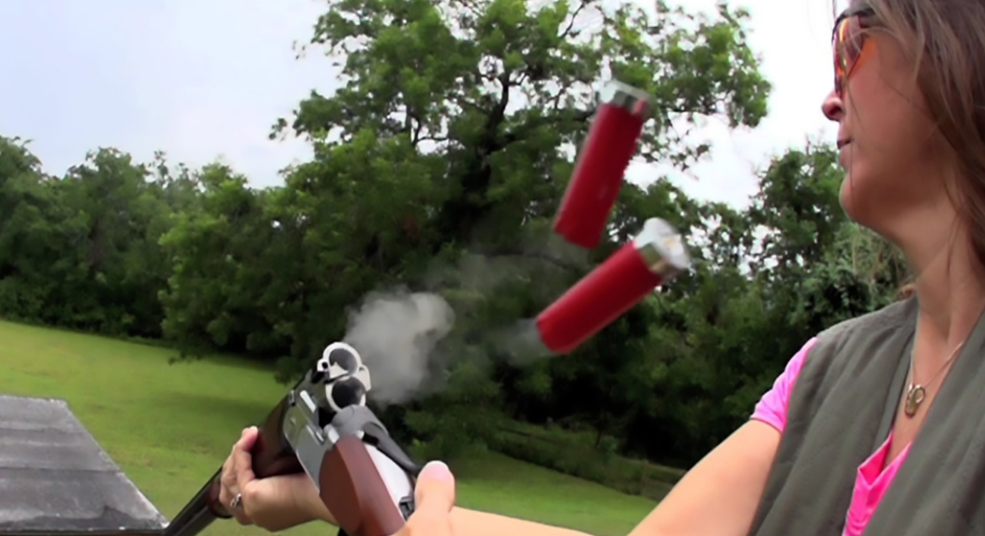
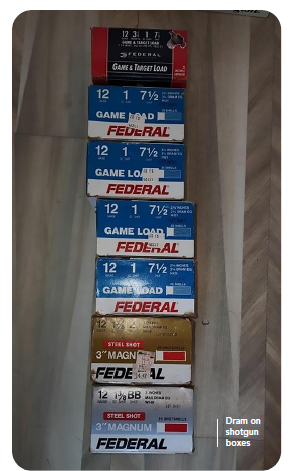
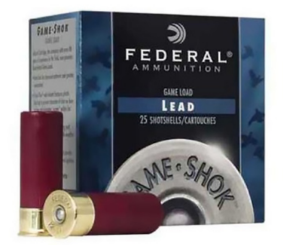
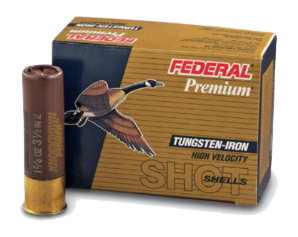
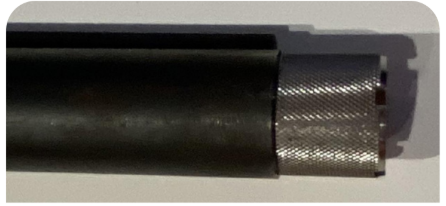
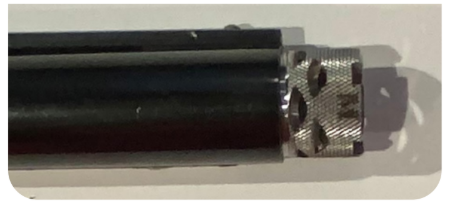
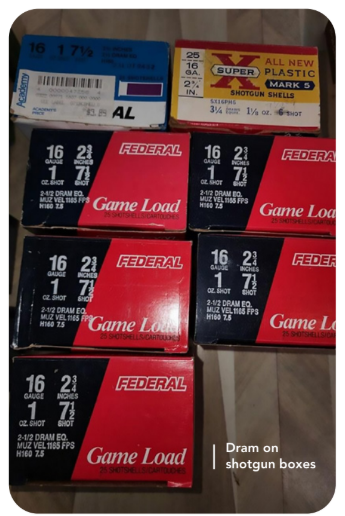
If you measure an unfired shotgun shell, it is about ¼ inch shorter than its designated chamber length. The extra length accommodates the crimp as it unfolds. To make things more confusing, a 3-inch shotgun shell measures 2¾ inches in total unspent or unfired length. A 2¾-inch shotgun shell measures 2½ inches before being shot. A rule of safety is to only use shells that are as long as or shorter than the markings on your shotgun barrel. For example, if your shotgun is marked “12-gauge 2¾-inch or 3-inch,” you can usually safely fire 2¾-inch or 3-inch 12-gauge shot shells, but not the 3½-inch shot shells.
SHOT WEIGHT
This number tells you how much the shot charge weighs, in ounces. Shot is measured in grams or ounces. For example, a shot weight of 28 grams equals roughly one ounce, and 4 grams equals roughly 1/8 ounce of shot.
DRAM EQUIVALENT
This is an old measurement system for expressing velocity. This term was used back in the days when shotgun shells were loaded with black powder, which was measured in drams (16 drams equal 1 ounce). To find the actual velocity, you usually must look in the manufacturer’s catalog or refer to a ballistic guide. The higher the dram weight, the higher the velocities, which means higher pressures and therefore more recoil. Dram equivalent is used to indicate the number of drams that would be needed to achieve the same velocities when using modern smokeless powder.
When companies switched from black powder to modern smokeless powder, they placed the “Dram Equivalent” on boxes of ammunition to give the shooter an indication of shot velocity. While less commonly used today, the dram equivalent can still give the shooter an idea of the muzzle velocity. The shot shells you find on shelves today are loaded with modern smokeless propellants. These gunpowders are much lighter than black powder in the same volume. Manufacturers who still list dram equivalent usually use numbers like “3 dram eq.” or terms such as “lite,” “magnum,” or “max.” The larger the dram equivalent number, the higher the muzzle velocity and the more recoil the load will generate.
There are several reasons why a shotgun shooter needs to know the dram equivalent of the shells they are shooting. If the data on the box of shotshells does not indicate dram equivalent, the shooter must look at the velocity, shot weight, and shot size to get a close approximation. There are dram equivalent charts available for this calculation.
Many shooting ranges and most clay target sports require that shotshells are no larger than 3-dram equivalent. This is for two reasons. One is that the range or competitive shooting event wants to keep the noise or report of the discharging firearm below a certain decibel level. The second reason is that the range or competitive shooting event wants to keep the distance the shot travels under a certain distance. This is usually due to the proximity of the public or the range’s property line.
VELOCITY
The term velocity is replacing “dram equivalent” on most shotshell box data. The faster a shot charge travels, the harder it hits, and the more recoil a load has when fired. Velocity is usually measured in “feet per second” (fps). The velocity of shotshells can vary in range. Common velocities include 1,100 fps, 1,200 fps, and 1,300 fps.
SHOT
The pellets in shotshells are collectively called “shot.” Like sizes of gauge, the smaller the number the larger the shot. Subsequently, the larger the number, the smaller the shot size. The smallest group of shot sizes commonly used are Numbers 9, 8 1⁄2, 7, and 7 1⁄2. These are the sizes you’ll usually see on target loads for clay shooting, but they are also used for some smaller game birds. The next group of shot sizes are Numbers 6, 5, and 4. These are used for pheasants, larger ducks, rabbits, and squirrels. The big shot sizes, Numbers 3, 2, 1, and Letters B, BB, BBB, T, F, and FF shot are used for larger game birds and animals. These large pellets will hold their velocity and retain their energy.
Buckshot is recognized from No. 4 Buck (.220-inch diameter) to 000 (pronounced “triple-ought”) Buck (.360-inch diameter). The higher the number reflects a smaller pellet size, and the more zeros in the “ought” size reflects the larger the pellet diameter.
Slugs are single projectiles and are generally reserved for big game hunting, such as deer and sometimes bear. Some states do not allow rifle hunting for larger game animals in some areas and only allow shotgun hunting with slugs. Always check your state’s hunting regulations for legal means and methods.
Shot can be made from a variety of materials. These materials include pure lead, lead coated with another material like copper, or non-lead components such as steel, bismuth, tungsten, and other materials, usually referred to as “non-toxic” shot. These two categories of shot (lead and non-toxic) are not the same regarding their properties or legal requirements. As a shooter, you need to educate yourself on the ammunition you are shooting because using the wrong ammunition can lead to having a very bad day!
There are four things that every shotgun shooter must know regarding steel (or non-toxic) shot. Steel shot is required whenever hunting waterfowl, steel shot patterns differently than lead shot, steel shot does not compress like lead shot, and steel shot is lighter than lead shot. Ignorance can lead to damaged firearms, serious bodily injury or death, and legal issues.
STEEL (NON-TOXIC) SHOT IS REQUIRED TO HUNT WATERFOWL
Non-toxic shot has been required to be used for waterfowl hunting since the mid-1990s. Anyone hunting ducks, coots, mergansers, geese, and swans are required to use non-toxic shot. These laws were passed to protect birds that ingested pebbles and rocks to grind up food, and were ultimately ingesting lead, which resulted in birds dying from lead poisoning. The U.S. Fish and Wildlife Service (FWS) under the U.S.
Department of the Interior is now restricting the use of lead ammunition on many federal lands. The only ammunition allowed on these lands is steel shot or monolithic bullets that contain no lead.
Many states, such as California, are starting to follow the FWS lead and banning lead projectiles.
It is the responsibility of the shooter to know and understand the laws regarding the ammunition that they are shooting. Violating ammunition restrictions can lead to state and/or federal violations.
Remember, ignorance of the law is no excuse.
STEEL (NON-TOXIC) SHOT PATTERNS DIFFERENTLY
Steel shot, because of the hardness of the pellets, do not pattern the same as lead shot. Steel shot patterns one choke higher. For example, steel shot sent through a cylinder choke patterns as an improved cylinder choke, steel shot sent through an improved cylinder choke patterns as a modify choke, and steel shot sent through a modify choke patterns as a full choke.
This fact is very important for every shotgun shooter to understand. One reason is that shooting steel shot out of any choke designated as full or larger can cause a dangerous situation. It is also important for hunters to realize that steel patterns one choke higher for a quick, clean, and ethical kill. Too much choke can lead to a wounded bird because the shot did not spread out enough. It can also cause too much damage to the edible portions of the game being hunted.
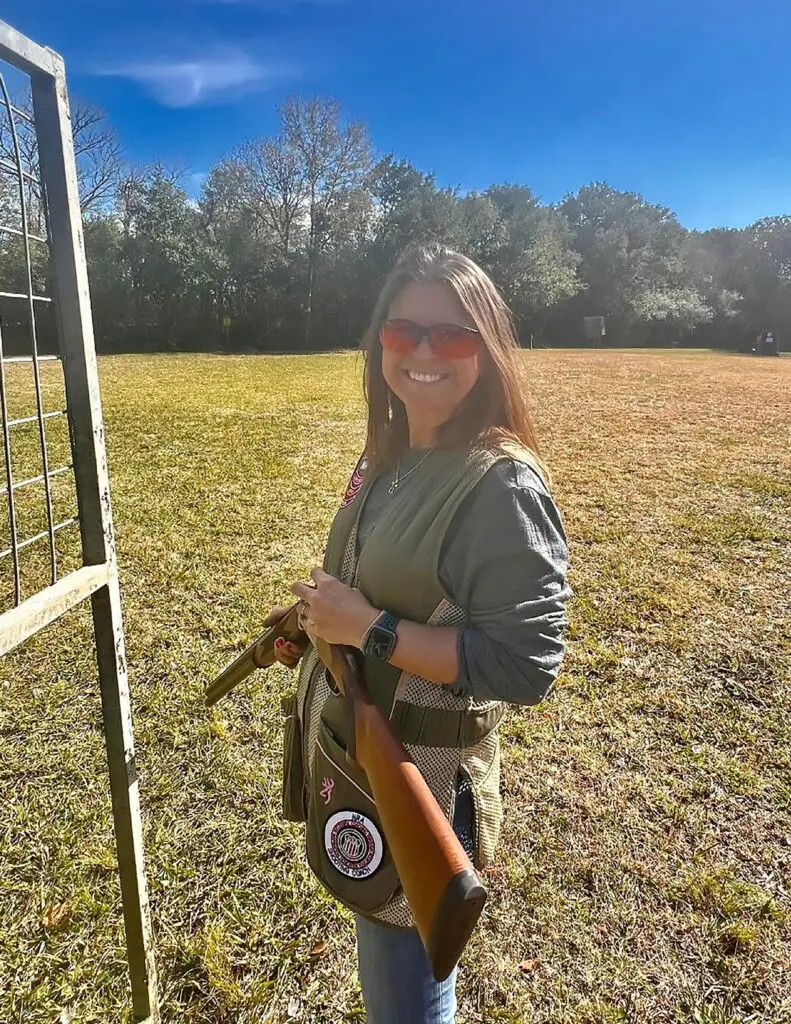
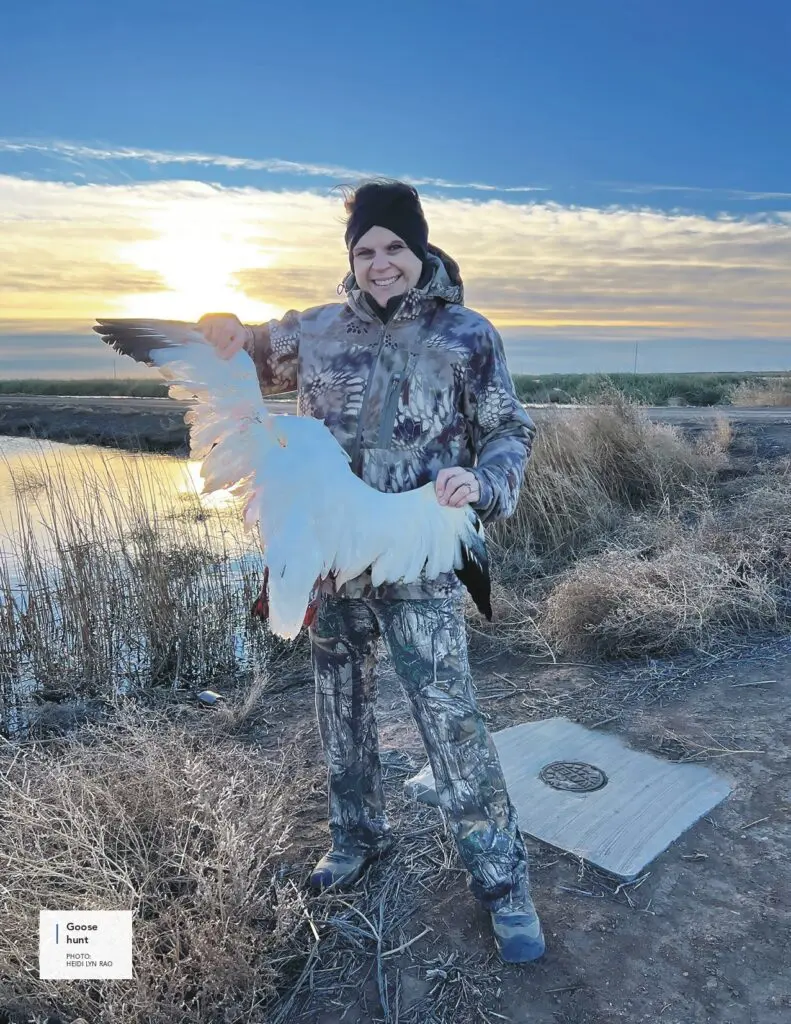
STEEL SHOT DOES NOT COMPRESS
Steel shot does not compress like lead shot. As a result, a careless shooter can ruin their expensive shotgun barrel. Since steel shot does not compress like lead shot, it is possible to bulge the end of the barrel and ruin it. In some cases, the high pressure from the powder combined with the strength of the steel shot, the end of the barrel can split or even blow out the choke, causing a potentially dangerous situation.
As a rule, never, ever, shoot steel shot out of a standard full choke or an extra-full choke that is used for turkey hunting. All full and larger chokes should be reserved for lead shot only.
I have seen full chokes marketed for steel shot. These chokes should be avoided for several reasons. First, even though the choke can handle the lack of compression qualities of steel shot, you still have the barrel that may not handle the lack of compression where it meets the choke. This means that you still run the risk of ruin-
ing your barrel.
Another reason to avoid a full choke designed to handle steel shot is that it patterns different than lead, as mentioned above. This means that a choke designed to handle steel shot is actually patterning as an extra-full choke, like those used in turkey hunting.
Remember that steel shot patterns one choke higher compared to lead shot. Turkey hunters usually use an extra-full turkey choke with lead shot. Also, an extra-full choke would be “too much” choke for waterfowl hunters who are required to use steel shot.
STEEL SHOT IS LIGHTER IN WEIGHT
Steel shot is lighter in weight than lead shot. This means that it can travel further than lead shot. As a result, not understanding the distance steel shot can travel can cause safety issues as well as legal issues. Anyone shooting steel shot needs to be aware of other hunters or the public in the area that could be struck by falling pellets or “shot.”
Some shotgun ranges restrict the use of steel shot and require only lead shot to be used on their range. This could be due to the encroachment of housing; steel shot could travel past the bound- aries of the range into neighborhoods or developed areas beyond the range.
Projectiles, including shot, crossing property lines, could potentially put the shooter in legal jeopardy. In Texas, it is illegal for the projectile or projectiles fired from your firearm to cross property lines onto the property of another. This means that if you are used to shooting lead shot and know the distance between property lines, and you switch to steel shot, you must account for the further travel of the pellets.
CHOKES
Chokes constrict and hold the shot pattern together for a specified distance. These constrictions are shown as “Thousandths of an Inch.” The measurement, thousandth of an inch, is equal to 1/1,000 of an inch. Most shotgunners believe that if their shotgun’s choke states it is a cylinder, skeet, improved cylinder, modified, improved modified, or full, that is the pattern, or “spread” that comes out of their muzzle.
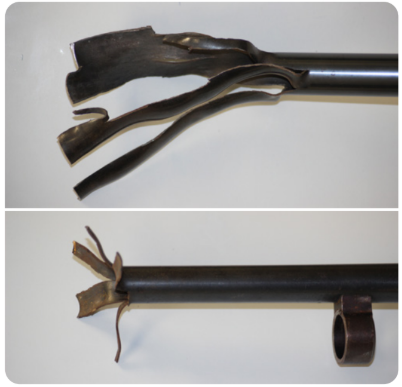
Choke constrictions for the common 12-gauge and 20-gaugeare as follows:
- 12 Gauge – cylinder (.000), skeet (.005), improved cylinder (.009),modified (.019), and full (.035)
- 20 Gauge – cylinder (.000), skeet (.004), improved cylinder (.006),modified (.014), and full (.025)
Shotguns either have choked barrels, also known as “fixed barrels”, or they have screw in chokes. Choked barrels should be marked on the barrel(s) Imp for improved cylinder, Mod for modified, or Full. Screw in chokes come in many constrictions with the most common being skeet, improved cylinder, modified, or full chokes. The constriction for screw in barrels will be spelled out on the choke or identified by notches or asterisks. Each manufacturer has their own unique marks on their chokes indicating the constriction.
Understanding the intricacies of shotguns, chokes, and your ammunition will almost always make you a better shooter. If you have ever wondered why you missed that easy shot or are having trouble improving your shotgun skills, the trouble might be the relationship between your choke and barrel or the type of ammunition, velocity, dram equivalent, shot size, etc., you are using.
Basic gun safety is equated to knowing your firearm. By knowing your firearm, you become aware of the gun’s limitations as well as your own. It is equally important to know your ammunition, including its qualities and the distances it can travel. When using a firearm, safety is the most important item. Remember, it is up to you, the shooter, to understand the quality and properties of the ammunition, including steel shot, that you are shooting.
It is important for shooters in any discipline to possess the knowledge, skills, and attitude to safely and properly use their firearms. Part of this is education and learning all we can about the firearms, ammunition, hunting opportunities, and the sporting activities we participate in. Handling shotguns requires the same safety precautions that you would follow with any firearm. Safety begins with you! ★
